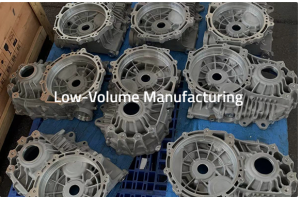Components include — AI & Machine Learning integration
The combination of rapid prototyping and artificial intelligence (AI) is changing the way prototypes are created. With AI-based algorithms design processes can be improved by detecting potential defects and improvements, always speeding the production of a prototype. This includes using AI to model thousands of potential material and shape combinations to determine which are the highest-performing before physical models are ever even created. The implications are that there will be the now confirmed less headroom for prototyping tool developers who fail to add AI into their offering because of how stagnant V1 'creatives' have remained, with AI integration in prototyping tools annual growth over the next five years coming in at 27%, according to a MarketsandMarkets study of 2023, paints a significant picture of a shift towards superior smart AI assisted prototype etiquette.
New Generation Functional Materials
The rapid prototyping has come of age due to the advancements in material science. By making the same parts with new materials, not only we provide better resistance to the elements and to the heat, but we also give conductivity and transparency to the parts. For instance, 3D printing with graphene-infused polymers can produce prototypes that are not only structurally strong, but also electrically conductive. The materials be applied to test more functional prototypes under load for industries including electronics and automotive, which will offer a closer real-world look at what the end product can expect to deliver.
Eco-Friendly Prototyping
As the prototyping industry moves towards the future, sustainability is a huge factor. Sustainable Prototyping: Companies are moving towards green prototyping, wherein products are built using bio-degradable or recyclable plastics. Not only do these sustainable practices lower the carbon footprint, but they cater to an increasing market of environmentally aware consumers. According to a recent survey conducted by the firm, PwC, about 78% of the buyers are willing to buy from a company whose product offers proper indication of being environmentally-friendly, thereby compelling companies to choose more sustainable options in rapid prototyping as a service.

Hybrid Prototyping Techniques
Hybrid prototyping has seen a surge in the blending of traditional manufacturing with modern day prototyping techniques. This hybrid method is using the best of both worlds from additive manufacturing (3D printing) and subtractive manufacturing(CNC machining) to make parts that can be both intricate and accurate. Hybrid prototyping enables the creation of mechanically and cosmetically functional components that cannot be produced with additive methods alone. Deloitte says that hybrid prototyping lead time can be reduced by up to 50% compared to traditional prototyping without sacrificing the quality of the products.
Enhanced Collaboration Tools
Collaborative prototyping tools are in high demand due to the influence of remote work on how teams interact. They allow designers and engineers to share designs, modify them, and perform design simulations and testing in real-time, with no need for either persons to be in the same physical location. Collaboration tools built within prototyping software let teams collaborate better and reduce design/development time while minimizing mistakes. According to Gartner forecasts, by 2025, more than 85% of businesses will have adopted online collaborative tools and there will be a dramatic growth of collaboration in cloud-based platforms that will significantly boost global product development cycles.
In these, trends demonstrates the tendency of rapid prototyping to change with the characteristics of efficiency, sustainability, and innovation in real time. The advancements in technology lead an ideal space for companies to enhance their products as well as get to market faster. Rapid Prototyping remains an essential tool in the product development toolkit which takes product development to new territories and the speeds at which change can happen.
